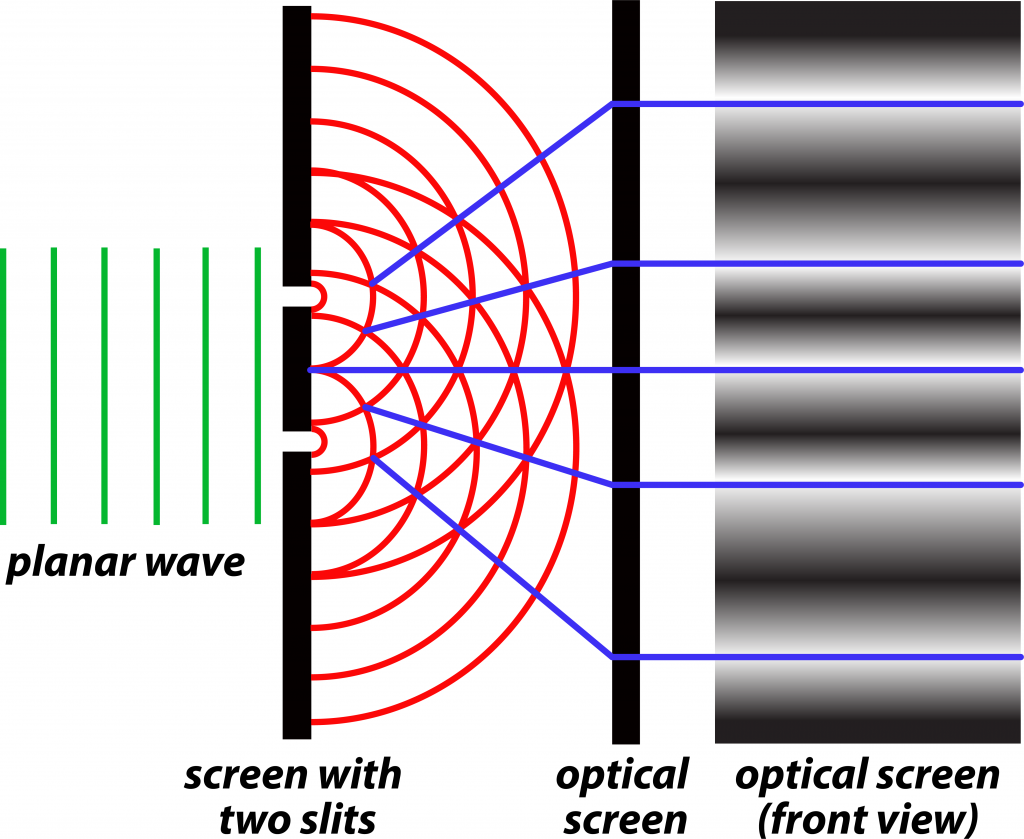I could write an ode to photons here. But do not worry, I will not.
Photons are really interesting. They do some weird things. Is a photon a particle? Or a wave? Both! But how do we know?
Traditionally we have always understood that photons are waves, and we can demonstrate this behavior with Thomas Young’s double slit experiment. If you allow light to pass through one slit, you get at the output what you might expect: a spread of light. However, if you apply light to two slits in the same plane and detect the output on a parallel plane, you see a strange intensity pattern that is perfectly explained by wave interference. See this image of the double slit experiment by gstraub (note that realistically the intensity will drop off at the ends):

The incoming wave is a coherent plane wave like the beam you get from a laser pointer. This just means that it is not spreading or focusing, and the light waves are lined up. After light goes through an aperture, it spreads due to an effect called diffraction. Notice that the waveform changes to be spherical after it passes through the slits. The spherical wavefronts interfere and cause the oscillating intensity you see on the screen. Intuitively, you would think that there would just be light uniformly across, but instead we see regularly spaced distinctly dark patches.
It wasn’t until about 1900 that scientists realized that photons might act like particles. They found unexpected results trying to eject electrons (tiny negatively charged particles revolving around a nucleus) from Potassium using light. Einstein theorized that light must come in packets, or quanta. More details on this can be found here.
And now you know about wave-particle duality (how photons act like both waves AND particles), an important part of understanding what you can do with light!
